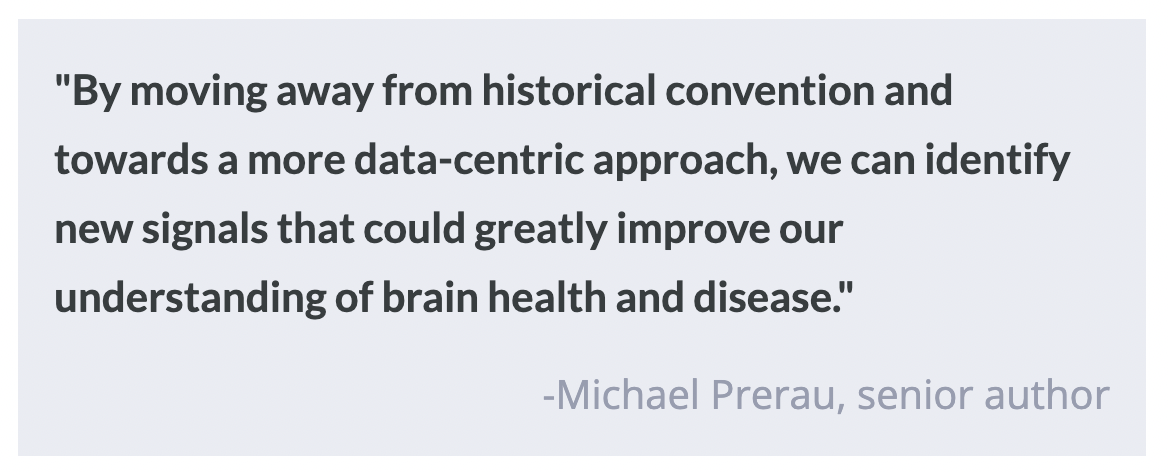“Sleep Fingerprints” Can Identify Signatures of Psychiatric Disease
Post by Anastasia Sares
The takeaway
Researchers have developed a way to concisely quantify the activity of tens of thousands of waveforms occurring in a person’s brain during sleep, uncovering stable profiles of different people. This will help us understand individual differences in sleep, from the normal to the pathological: as a first step, it has revealed new insights into the brains of people with schizophrenia.
What's the science?
Our brains don’t turn off when we go to sleep. They remain hard at work, forming memories, dreaming, and recuperating from the day. We know this, in part, because we can observe them through a technique called polysomnography, where we record the electrical activity of the sleeping brain. The signal we get from polysomnography is composed of a symphony of overlapping brain frequencies, as well as short bursts of oscillatory activity called transient oscillations. Among transient oscillations, sleep scientists are especially interested in sleep spindles, which are involved in memory consolidation and are altered in disorders such as Alzheimer’s, autism, and schizophrenia. However, the current methods for defining sleep spindles are based on methods from the early 1900s and are therefore biased toward the waveforms people could see easily by eye in paper tape traces of brain activity.
This month in the journal Sleep, Stokes and colleagues developed a new approach, which, rather than just looking at traditional spindles, identifies tens of thousands of spindle-like waveforms at all times and frequencies during sleep. They summarized these waveforms in a sleep “fingerprint” that can be used to identify signatures of neurological health and disease.
How did they do it?
The authors analyzed data from both healthy, neurotypical people and people with schizophrenia who had had recordings taken of their brain waves in the lab while they slept. They transformed the signal from each person into a time-frequency plot, with high frequencies (fast oscillations) near the top and low frequencies (slow oscillations) near the bottom, and time going from left to right. They then applied an image processing technique called the watershed algorithm to identify regions with spindle-like brain waveforms. Finally, they created visual summaries showing how these tens of thousands of waveforms continuously evolve across the night. This is more effective than dividing activity into the traditional “sleep stages” because it retains more information.
What did they find?
The team generated these visualizations for each participant, showing how brain activity changed as a person went deeper and deeper into sleep, and also how brain activity related to the slowest sleep oscillations, like tiny waves superimposed on a rising and falling tide. Surprisingly, they found a variety of activity patterns in healthy, neurotypical participants, yet each individual had the same pattern from night to night. Therefore, these representations acted like a fingerprint: different across individuals but consistent over time. They then demonstrated the clinical usefulness of this method by comparing the control and schizophrenia cohorts, which revealed two new classes of spindle-like events that traditional methods had been unable to capture.
What's the impact?
The sleep fingerprints developed by this team offer a highly informative way to summarize a large amount of data: electrical signals gathered over the course of an entire night. What’s more, these fingerprints are different between people but stable within the same person—meaning we may be able to use them to inform clinical approaches for psychiatric conditions, sleep disorders, and more. The researchers have released an open-source toolbox to allow other scientists to use this powerful technique.




